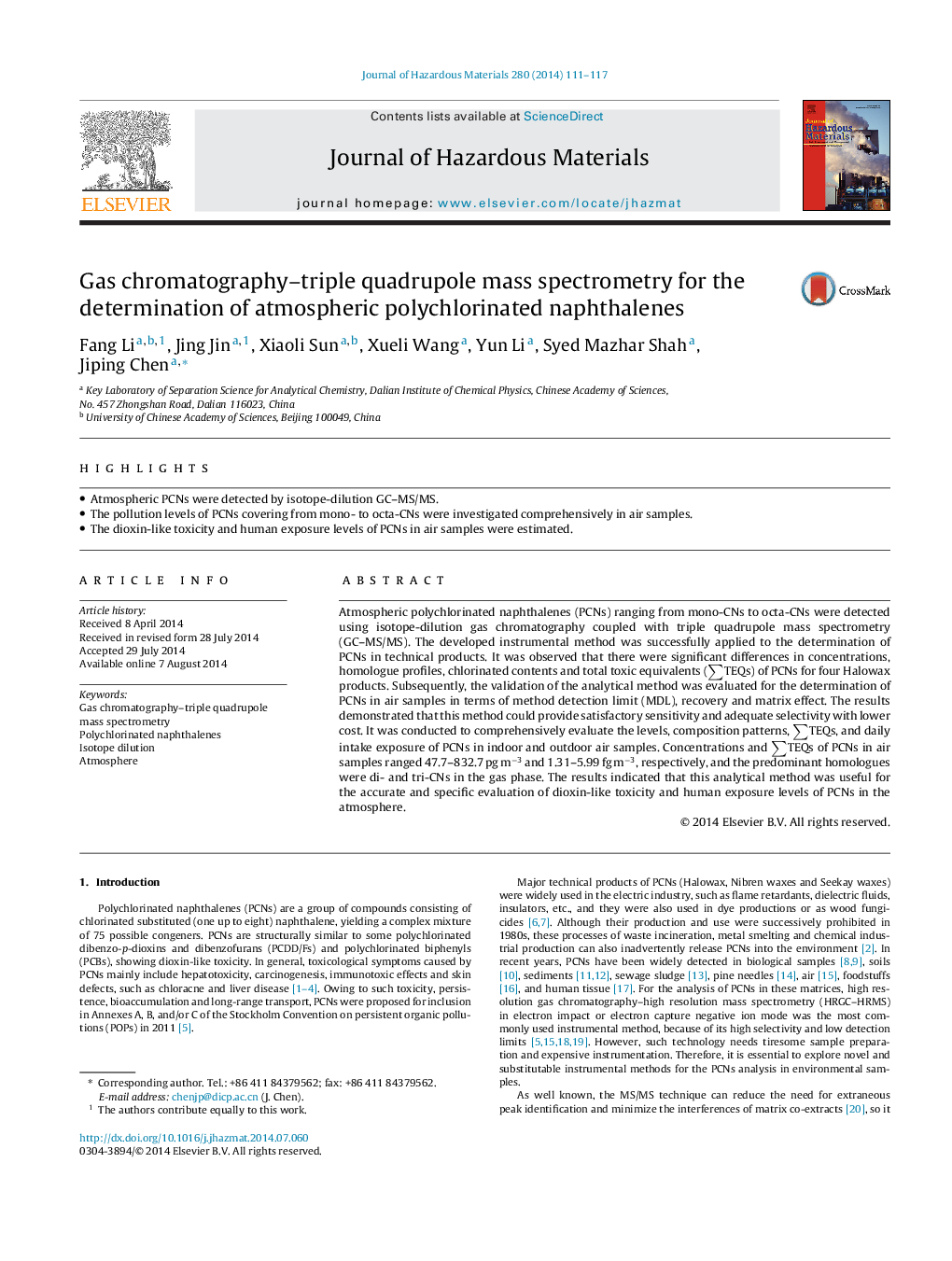| Article ID | Journal | Published Year | Pages | File Type |
|---|---|---|---|---|
| 6971296 | Journal of Hazardous Materials | 2014 | 7 Pages |
Abstract
Atmospheric polychlorinated naphthalenes (PCNs) ranging from mono-CNs to octa-CNs were detected using isotope-dilution gas chromatography coupled with triple quadrupole mass spectrometry (GC-MS/MS). The developed instrumental method was successfully applied to the determination of PCNs in technical products. It was observed that there were significant differences in concentrations, homologue profiles, chlorinated contents and total toxic equivalents (âTEQs) of PCNs for four Halowax products. Subsequently, the validation of the analytical method was evaluated for the determination of PCNs in air samples in terms of method detection limit (MDL), recovery and matrix effect. The results demonstrated that this method could provide satisfactory sensitivity and adequate selectivity with lower cost. It was conducted to comprehensively evaluate the levels, composition patterns, âTEQs, and daily intake exposure of PCNs in indoor and outdoor air samples. Concentrations and âTEQs of PCNs in air samples ranged 47.7-832.7 pg mâ3 and 1.31-5.99 fg mâ3, respectively, and the predominant homologues were di- and tri-CNs in the gas phase. The results indicated that this analytical method was useful for the accurate and specific evaluation of dioxin-like toxicity and human exposure levels of PCNs in the atmosphere.
Related Topics
Physical Sciences and Engineering
Chemical Engineering
Chemical Health and Safety
Authors
Fang Li, Jing Jin, Xiaoli Sun, Xueli Wang, Yun Li, Syed Mazhar Shah, Jiping Chen,
